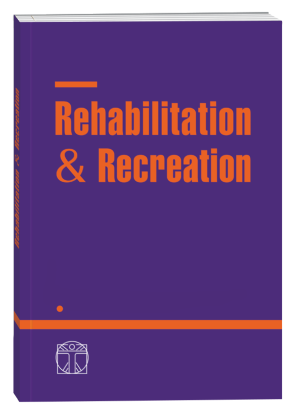ON THE ISSUE OF MANIFESTATION OF MOTOR DISORDERS IN CHILDREN WITH VISUAL DEPRIVATION
DOI:
https://doi.org/10.32782/2522-1795.2023.17.20Keywords:
motor disorders, children with visual deprivation, kinesthetic sensations, physical development.Abstract
The article deals with the analysis of the data of modern scientific studies devoted to the manifestation of motor disorders in children with visual deprivation. Incorrect functioning of the visual analyzer leads to violations in physical and mental development, starting from childhood. The purpose of the study is to analyze motor disorders in children with visual impairment. Research methods. Theoretical analysis of special literature on the selected research topic, which involved the use of a number of the following methods: reconstruction, apperception, aspectual, hermeneutic, critical, conceptual and problem analyses. Results. Children with visual deprivation have difficulties in imitating and mastering spatial representations and motor actions, and an incorrect posture is formed when performing motor actions. A decrease in motor activity leads to a low development of muscle strength, disorders in the development of the musculoskeletal system. These movement disorders also limit the development of fine motor skills and affect the occurrence of spontaneous movements of various parts of the body. In children with visual deprivation, the following is observed: weak development of all functional systems (cardiovascular, vegetative, etc.), impaired coordination development (orientation in space, sensory and perceptual abilities). Conclusions. For the correction of motor disorders in children with vision derivation, an important role is played by the pathology of the sensori-motor sphere, associated with a violation of the kinesthetic sense, which manifests itself in an unformed idea about the execution and improvement of movements, as well as in problems associated with a violation of motor-kinesthetic memory. It is this memory that underlies the development of all motor acts. Violation of kinesthetic sensations does not allow children with visual deprivation to correctly reproduce the scheme of motor action. This can lead to insufficient cortical analysis of kinesthetic impulses, which manifests itself in the difficulty of choosing the right combination of movements.
References
Бутов Р.С. Фізична реабілітація дітей шкільного віку з вадами зору в умовах спеціалізованих навчальних закладів : автореферат. Київ : Національний університет фізичного виховання і спорту України, 2016. 23 с.
Буховець Б.О., Долинський Б.Т., Борщенко В.В., Погорелова О.О. Особливості змін мозкового кровообігу дітей середнього шкільного віку з функціональними порушеннями зору за впливом методу Фельделькрайз. Інноваційна педагогіка. 2021. № 32. С. 80–85.
Демчук С. Характеристика просторової організації тіла молодших школярів із депривацією зору в процесі фізичного виховання. Фізичне виховання, спорт і культура здоров’я у сучасному суспільстві : збірник наукових праць. 2016. № 33. С. 76–80.
Кашуба В., Савлюк С Біологічні передумови розробки концепції формування просторової організації тіла дітей 6–10 років із депривацією зору. Journal of Education, Health and Sport. 2017. № 7 (7). С. 1095–1112.
Кравченко І., Гладов В. Особливості фізичного виховання дітей із порушеннями зору. Педагогічні науки: теорія, історія, інноваційні технології, 2017. № 1 (65). С. 250–259.
Савлюк С. Передумови розробки концепції з формування просторової організації тіла дітей із депривацією сенсорних систем у про-
цесі фізичного виховання. Вісник Прикарпатського університету. 2017. № 26. С. 269–277.
Yekta Ab., Hooshmand Elh., Saatchi M., Ostadimoghaddam H., Asharlous Am, Taheri Az. Global Prevalence and Causes of Visual Impairment
and Blindness in Children: A Systematic Review and Meta-Analysis. J Curr Ophthalmol. 2022. 34(1). 1–15. DOI: 10.4103/joco.joco_135_21.
Abdolalizadeh P., Chaibakhsh S., Falavarjani KG. Global burden of paediatric vision impairment: A trend analysis from 1990 to 2017. Eye (Lond). 2021, No. 35. Pp. 2136–2145.
Rudnicka A.R., Kapetanakis V.V., Wathern A.K., Logan N.S., Whincup P.H. Global variations and time trends in the prevalence of childhood myopia, a systematic review and quantitative meta‑analysis: Implications for etiology and early prevention. Br J Ophthalmol. 2016. No. 100. Pp. 882–900.
Hoeg B., Moldow B., Ellervik C., Klemp K., Erngaard D., La Cour M., Danish Rural Eye Study: The association of preschool vision screening with the prevalence of amblyopia. Acta Ophthalmol. 2015. No. 93. Pp. 322–329.
Downloads
Published
How to Cite
Issue
Section
License

This work is licensed under a Creative Commons Attribution-NonCommercial-NoDerivatives 4.0 International License.












